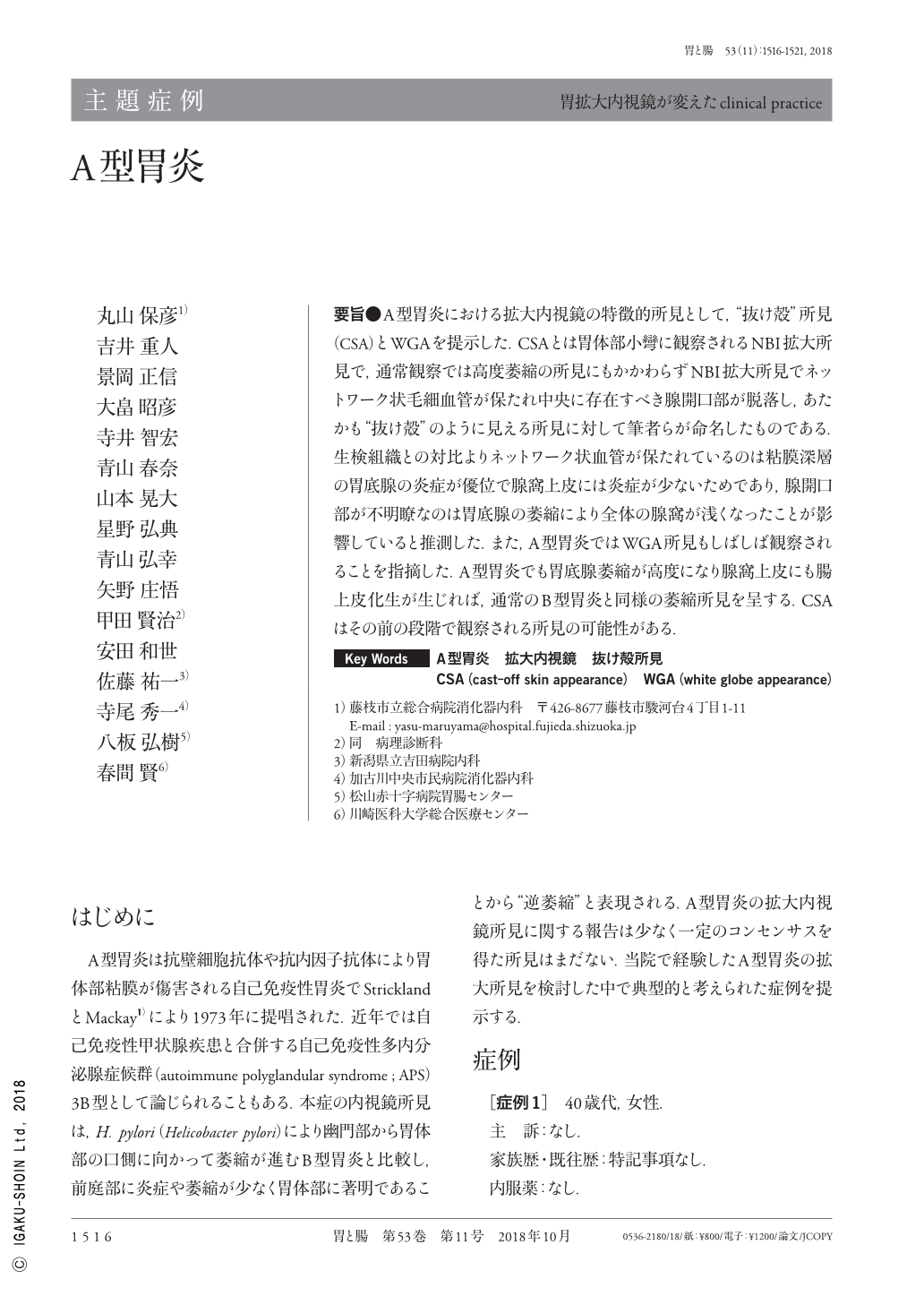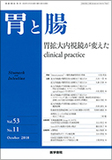Japanese
English
- 有料閲覧
- Abstract 文献概要
- 1ページ目 Look Inside
- 参考文献 Reference
- サイト内被引用 Cited by
要旨●A型胃炎における拡大内視鏡の特徴的所見として,“抜け殻”所見(CSA)とWGAを提示した.CSAとは胃体部小彎に観察されるNBI拡大所見で,通常観察では高度萎縮の所見にもかかわらずNBI拡大所見でネットワーク状毛細血管が保たれ中央に存在すべき腺開口部が脱落し,あたかも“抜け殻”のように見える所見に対して筆者らが命名したものである.生検組織との対比よりネットワーク状血管が保たれているのは粘膜深層の胃底腺の炎症が優位で腺窩上皮には炎症が少ないためであり,腺開口部が不明瞭なのは胃底腺の萎縮により全体の腺窩が浅くなったことが影響していると推測した.また,A型胃炎ではWGA所見もしばしば観察されることを指摘した.A型胃炎でも胃底腺萎縮が高度になり腺窩上皮にも腸上皮化生が生じれば,通常のB型胃炎と同様の萎縮所見を呈する.CSAはその前の段階で観察される所見の可能性がある.
In this study, we present CSA(cast-off skin appearance)and WGA(white globe appearance)as the features of magnifying endoscopic findings in type A gastritis. CSA implies a fine network of vessels without crypt openings in the corpus observed using magnifying endoscopy, despite observing severe atrophy using conventional endoscopy. The histological characteristics of CSA are assumed to be dominant atrophy of fundic glands in the deeper mucosa, with a less inflamed foveolar epithelium, and the resulting shallow crypt due to the atrophic fundic glands. Reportedly, WGAs, which are consisted of the intra-glandular debris and often observed at the margin of well differentiated adenocarcinoma, are also found frequently at the corpus of type A gastritis.
Severe atrophy of the fundic glands leads to intestinal metaplasia in the foveolar epithelium of the corpus in type A gastritis, which resembles the appearance of type B gastritis. CSA may be observed in the earlier stage of gastritis. Further studies are warranted on the prevalence of CSA in type A gastritis.

Copyright © 2018, Igaku-Shoin Ltd. All rights reserved.


